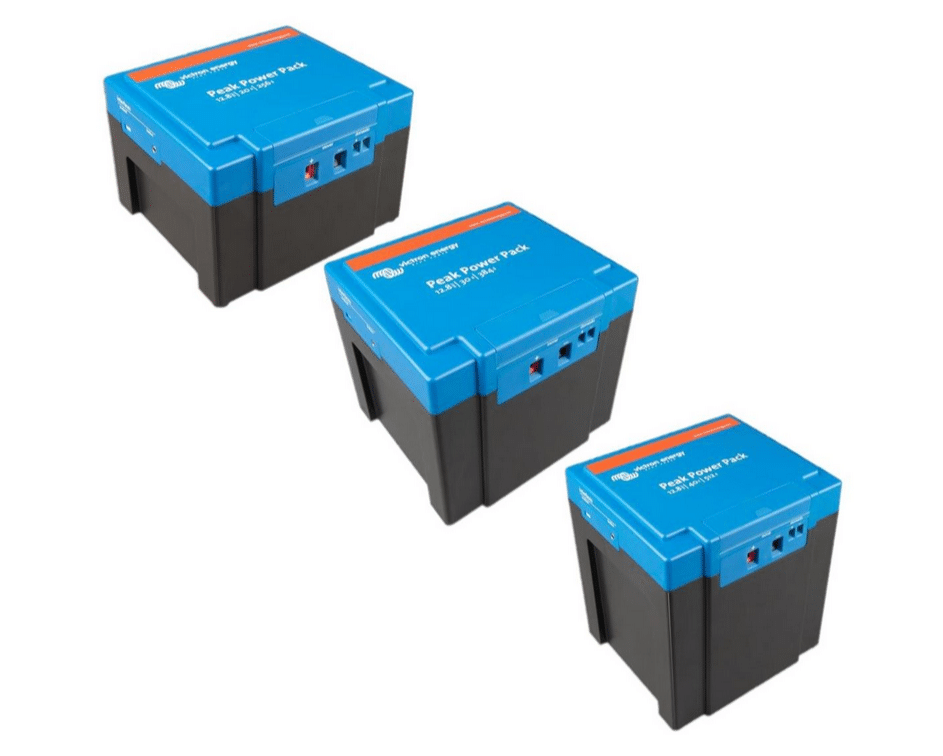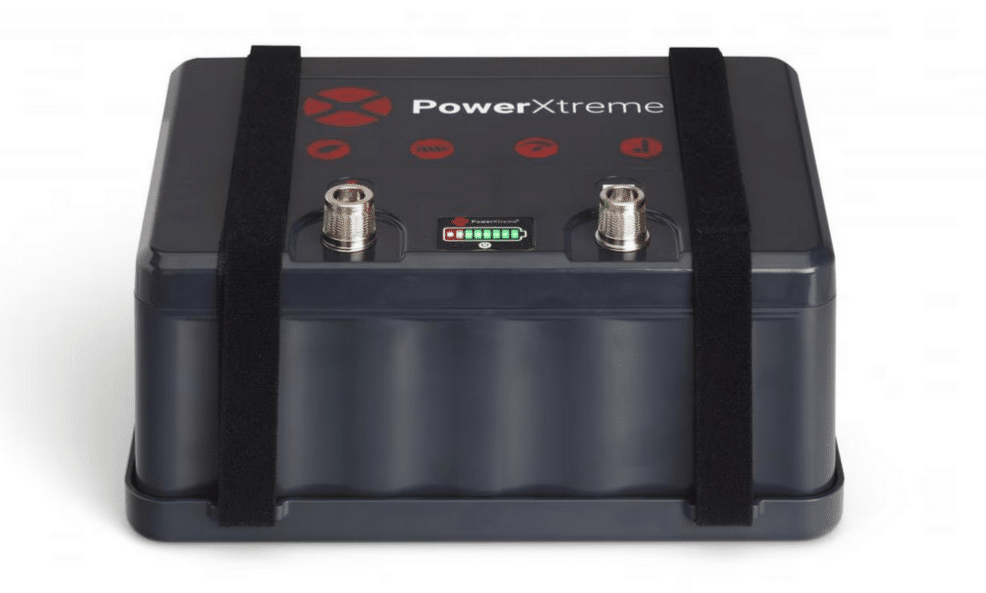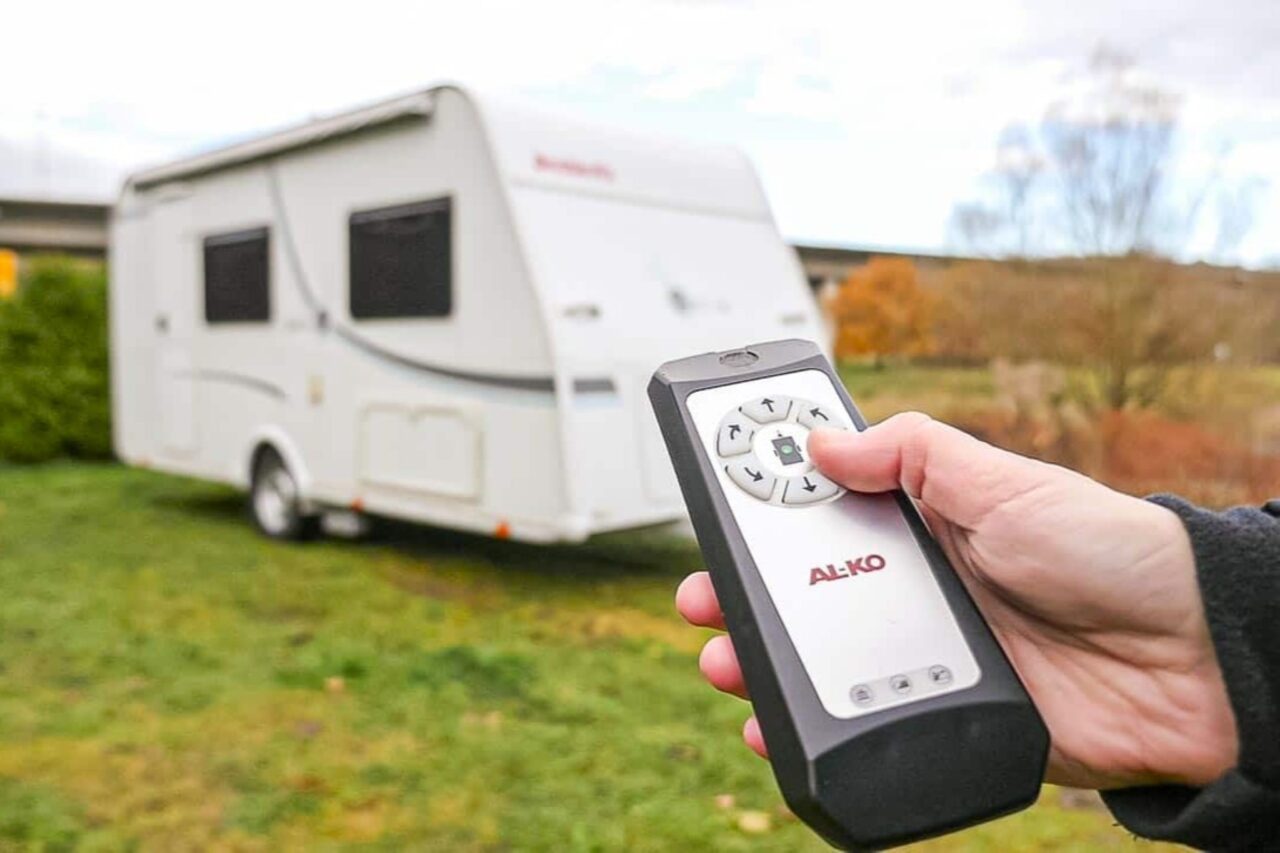Once you have it, you don’t want to give it back. Those who don’t (yet) have it certainly long for it sometimes. A mover for caravans, an electric maneuvering aid, is an indispensable helper for many campers on their caravan vacation.
The Mover maneuvers your caravan at the touch of a button, thanks to the following three elements: Drive unit, control unit and remote control. But for the mover to work, it needs power – from a 12-volt body battery.
We have put together the right one for you and your caravan in the following guide.
Inhaltsverzeichnis
Caravan batteries for individual requirements – an overview
If you want to operate a mover, you need a battery. That much is certain. If this is the sole purpose, then a battery that covers exactly this power requirement is sufficient.
However, if you want more, for example more self-sufficiency so that your caravan is independent of campsites and shore power for a few days, then we recommend that you calculate the correspondingly higher energy requirement and select the appropriate battery(ies).
In the camping sector, there are basically four types of body batteries with a voltage of 12 volts:
- Wet batteries
- Gel batteries
- AGM batteries
- Lithium batteries (LiFePo).
Not all batteries are equally suitable for (pure) Mover operation – AGM and lithium batteries make the most sense.
AGM batteries
They are the“deluxe version” of lead batteries: In AGM batteries (Absorbent Glass Mat), the electrolyte is bound in a glass fiber fleece, they are maintenance-free and designed to withstand even deep discharges (note: not a complete deep discharge, then they will also be damaged!)
When they are not in use, they lose less charge and therefore have a low self-discharge rate. They can easily supply the power required for movers but, like all lead-based batteries, have a limited service life of around 300 charging cycles.
Lithium batteries
Currently the 5-star variant on the camping market: Lithium iron phosphate batteries (LiFePO4) use iron phosphate as the cathode material, are very light in comparison, have a long service life of up to 5,000 cycles – meaning they can be recharged frequently – and deliver high charging and discharging currents.
The topic of deep discharge is also clearly on the plus side for this battery type: LiFePo batteries can be discharged up to 90 percent without hesitation and without affecting their service life, so you can use almost the entire specified number of ampere hours (Ah). However, the purchase price is high compared to the other technologies and charging at low temperatures is somewhat more difficult than with lead-based batteries.
Wet and gel batteries
The classic wet batteries (lead-acid batteries) and gel batteries are not as suitable for pure mover operation as the other two, but if you are thinking about purchasing a battery for other purposes, we would still like to briefly present the advantages and disadvantages of these two variants. These variants are also frequently installed in motorhomes.
Conventional lead-acid batteries consist of a positive and a negative lead plate, with an electrolyte liquid, namely diluted sulphuric acid, flowing between them. They are the cheapest of the battery types, but also require a lot of maintenance and are very heavy. There is also a risk of acid leakage.
In gel batteries, the electrolyte is bound in a gel. The batteries are maintenance-free, have a low self-discharge rate and a relatively long service life thanks to the gel. They also work reliably in a wide temperature range, making them ideal for winter camping as well as tours in the height of summer. They emit little power over a long period of time and are therefore less useful for pure mover operation.
The right mover battery – purchasing considerations and product recommendations
As soon as you have decided on a battery type, the next decision has to be made: Which model of this type should it be? You should pay attention to the following factors when selecting a suitable battery:
- Purpose and use
- Performance
- Service life
- Weight and payload
Use only for movers or more?
If you only want to use the battery to operate the mover, calculating the power is relatively simple: you just need to check the maximum power requirement of your maneuvering aid and select the battery amperage accordingly.
Perhaps you can include your approximate maneuvering time per pitch if you already have enough experience or already know the pitches. The particularly high power requirements are mainly needed in exceptional situations, such as when you have to maneuver on a steep slope or when there are edges or steps to overcome.
Tip
If you want more self-sufficiency, you can calculate your (daily) power requirements and select the appropriate battery capacity. You can find help with this in our article on making your caravan self-sufficient.
What capacity does a Mover battery need?
The capacity must be assessed differently depending on the battery type, as the currents are delivered differently. With lead batteries (e.g. AGM), the output should be at least 70 ampere hours (Ah), depending on the mover’s power requirements, while a LiFePO battery for pure mover operation is already good to handle with 30 Ah, as the discharge can go much deeper and therefore more of the energy can be used.
A simple example: With a lead battery with 50 percent discharge compatibility, you can only use 35 of 70 Ah, while you can also use a lithium battery with 35 Ah for 32 Ah – in other words, you can draw almost the same amount of current for half the capacity.
How many charging cycles make sense?
The more, the better, because the more charging cycles your battery can withstand, the longer it will last. The so-called cycle number describes how many charging cycles a battery can manage before the storage capacity decreases over time. Due to the battery type, this number is limited and predetermined.
How heavy can the battery be?
As the payload can be a not insignificant factor when deciding on a battery, the weight may fall into the same category. Lead-based batteries are all heavier than lithium batteries, which only weigh around 25 to 30 percent of a lead battery – with more effective power.
Product recommendations
A note in advance: Regardless of which lithium battery you buy, please check with the dealer or specialist workshop that this body battery is also approved for road use.
In the worst case scenario, a TÜV or insurance assessor may decommission the caravan due to incorrect batteries or only grant insurance benefits for approved batteries. Always seek expert advice and look out for the so-called E-number, which proves that the manufacturer meets certain requirements and limit values.
- Peak Power Pack – the lithium battery for the Mover
- PowerXtreme X 20 – Lithium battery for movers and more
- Electronicx – the 100 Ah AGM battery for self-sufficient travel
The Peak Power Pack, the small lithium battery from Victron Energy, is ideal for applications where high currents occur for short periods. The battery is primarily designed for caravans and is equipped with a built-in charger, which means it can also be charged while driving. The Power Pack can also be charged via the mains using the adapter supplied and via a solar panel.
Top customer ratings

Victron Peak Power Pack lithium battery, 12V
Low weight and easy installation
- High current output for caravan maneuvering aids and other high-performance applications
- Storage mode
- Fast charging possible via input 1 (high-current output)
The PowerXtreme X20 Mover lithium battery with 20 Ah is also suitable for use with a mover, even for heavy caravans and, in this size, also for more extensive self-sufficiency.
Top customer ratings

PowerXtreme X20 mover lithium battery, 20Ah
The PowerXtreme X20 is for campers who change campsites frequently and use the mover very intensively.
- Developed in the Netherlands
- The mover batteries (X20 – X30) have an integrated charger, simply charge with a cable!
- The mover batteries are very powerful
- Light in weight (X30 mover battery weighs only 5 kg, compared with AGM or lead acid 20 kg)
- All batteries equipped with Bluetooth and app (PowerXtreme PRO)
With this model, you have the high current for powerful maneuvering as well as a reliable supply for lighting, water pump, inverter, etc. We recommend the Electronicx battery with 100 Ah as an AGM battery. With this you are well equipped for (almost) all eventualities and supplied with electricity for a few days, regardless of the power supply at the campsite.
- AGM 12V 100Ah Batterie für Caravan, Wohnmobil, Camper & Freizeitfahrzeuge – ideal für…
- Maße: 278×175×190 mm, Gewicht: 21,5 kg – kompakte, stabile Bauweise für Wohnmobil-Stauräume,…
Tip for a long service life of the Mover battery
The best care for batteries: Use them! Regular charging and“drawing power” are the best things you can do for your battery. So if you choose a battery that you use almost exclusively for the mover, you should still charge it regularly, even if there is still enough power for several maneuvers.
FAQ
Where is the best place to install the Mover battery?
In the caravan, you have the option of installing the battery in a storage compartment, under the seat bench or perhaps under the bed – depending on where you have the most space available.
Which battery is the best for a mover?
As described in this guide, it depends on your individual use, namely what you want to use the battery for, which devices you want to operate with it if necessary and how long it should last. In general, AGM batteries and lithium batteries are best suited for Mover operation.
How much capacity should a battery for the maneuvering aid have?
The capacity must be assessed differently depending on the battery type. Depending on the mover’s power requirements, the output of AGM batteries should be at least 70 ampere hours (Ah), while a LiFePO battery for pure mover operation can be handled well with just 30 Ah.
How much does a Mover battery cost?
The range here is as wide as the selection on the market and the number of manufacturers. As a rough guide, however, you can say that for an AGM battery you should expect to pay from 120 euros upwards, for a small lithium battery for the mover from around 400 euros.
Cover picture: © CamperStyle
Letzte Aktualisierung der Preise am 2026-01-08 / Affiliate Links / Bilder von der Amazon Product Advertising API


